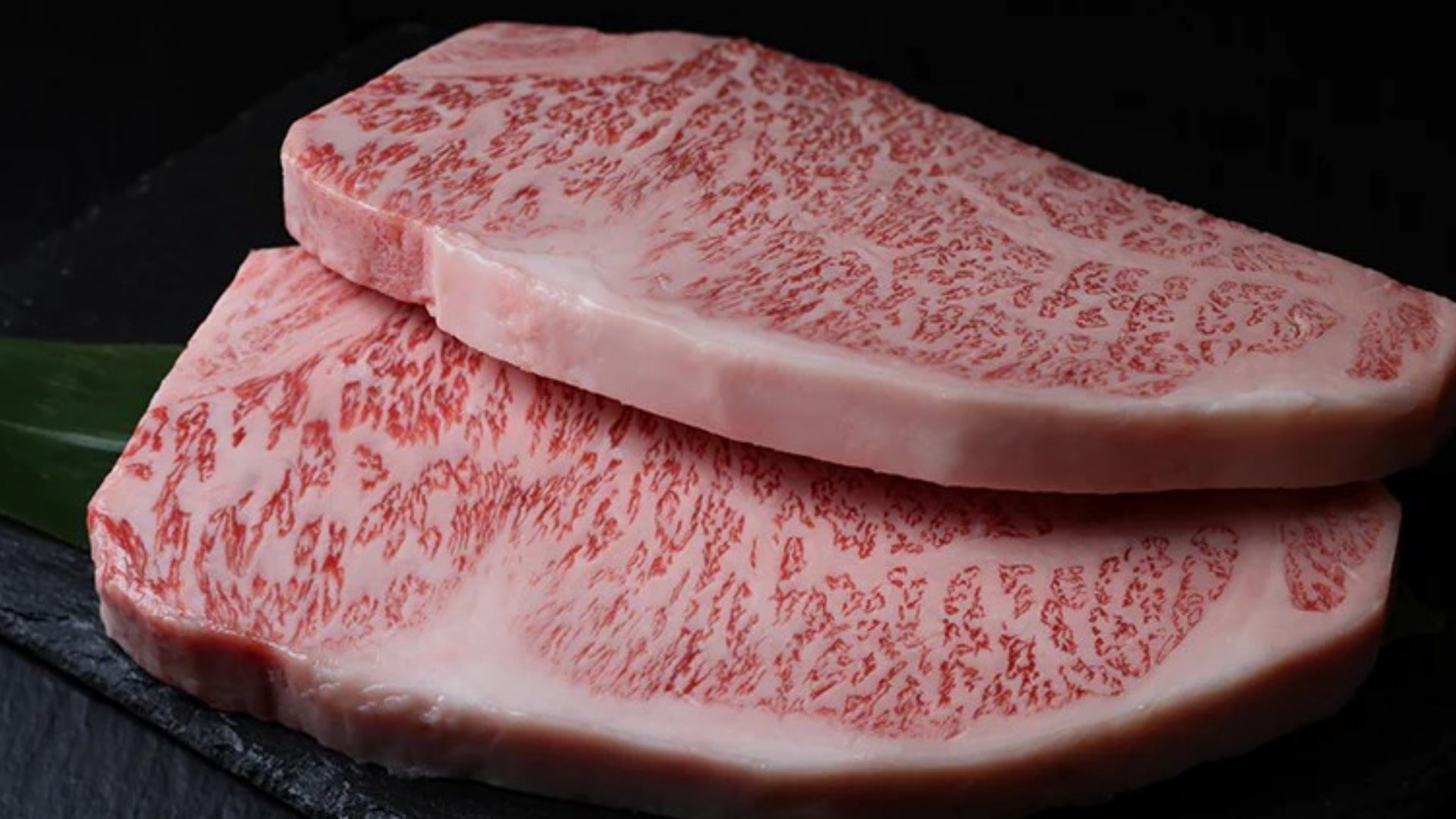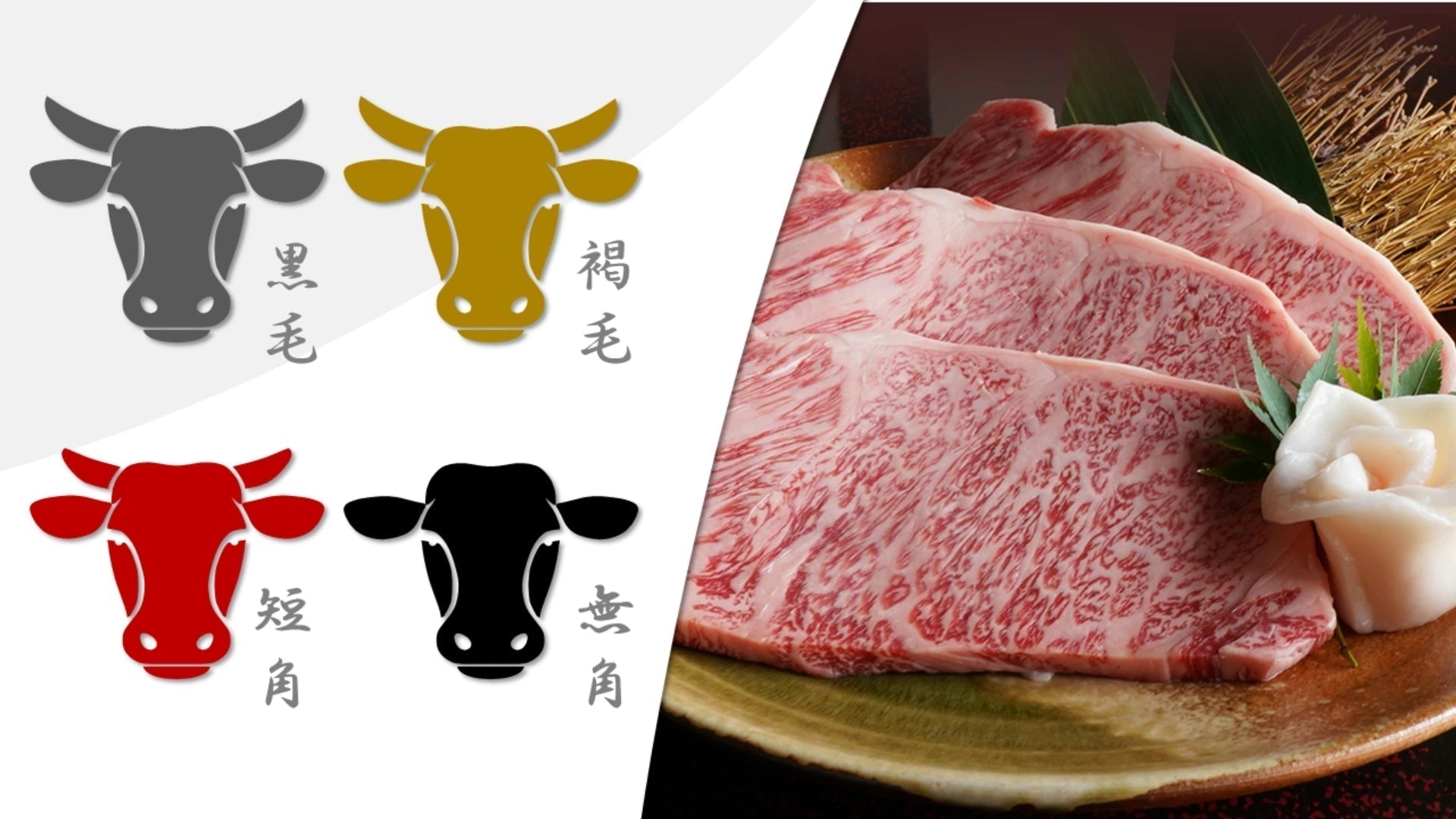Article: What Is Wagyu? A Beginner’s Guide to Premium Japanese Beef

What Is Wagyu? A Beginner’s Guide to Premium Japanese Beef
Popular around the world thanks to its unmatched flavor and texture, Wagyu is considered by most to be the highest quality beef in the world.
- But what is wagyu beef really?
- Inside Japan’s Strict Grading System
- Wagyu Around the World: Crossbreeding and DNA
- The Kobe Beef Example: A Brand Within Wagyu
- Is Wagyu Beef Healthy?
- The Serving Factor: Quality Over Quantity
- Bonus Tip: How to Elevate Your Wagyu Experience with Authentic Japanese Tools
- Wagyu Beef Q&A
But what is wagyu beef really?
Let’s dig into the world of meat juiciness and try to understand a couple of basic concepts.
First, the name says it all and doesn’t leave room for any misinterpretation.
The word “Wagyu” (和牛 in Japanese) literally means “Japanese cow” where Wa (和) stands for Japan and Gyu (牛) for cow.
So, whenever you see Wagyu printed on a package of burger patties at the grocery store or on the menu of a fancy Michelin-star restaurant, you know it has something to do with Japan.
Inside Japan’s Strict Grading System
While different countries are now raising their own breeds, only cattle born and bred in Japan can be considered 100% Japanese Wagyu.
The Japan Meat Grading Association (JMGA) strictly evaluates the quality of Wagyu beef based on criteria such as fat marbling (those fine white lines running through the steak), color, and texture.
Moreover, cattle undergo mandatory progeny testing to ensure that only the best Wagyu genes are preserved for breeding, resulting in detailed family trees for cows and a state-of-the-art tracing system that enables the end user to verify the source of the product they have bought.
Wagyu Around the World: Crossbreeding and DNA
Not all Wagyu is fake, but not all is purely Japanese either. Crossbreeding has created a global variety of Wagyu with different DNA percentages.
Does that mean Wagyu from other countries is fake? Absolutely not.
This brings us to the second point and its explanation is related to DNA.
To keep it simple, over the last few decades, pure Japanese Wagyu cattle genes have been used for cross-breeding with other breeds. This resulted in new cattle varieties with different original Japanese Wagyu DNA percentages.
Outside of Japan, the presence of Wagyu genes in the cow's DNA (regardless of how much) is usually enough to label its meat as Wagyu.
USA and Australia are good examples of this cross-breeding practice so nowadays their Wagyu beef, thanks also to solid marketing strategies and distribution channels, is widely available in many supermarkets worldwide.
More recently, crossbreeding of Wagyu genes has also been carried out in Europe and some Asian countries. However, nomenclature and rules may differ depending on the country where the cow is raised and marketed.
The names used to indicate crossbreeds and wagyu, in general, can be misleading, so a more careful and separate analysis is necessary.
The Kobe Beef Example: A Brand Within Wagyu
Kobe beef often steals the spotlight, but it represents just one of Japan’s many Wagyu brands. Let’s clarify this common misconception. Here, I will only mention the case of Kobe beef as an example.
This name is often used to indicate Wagyu, but it is actually only one of the many brands available.
One reason for its popularity is that it was one of the first brands to be exported from Japan, and over time it became a kind of synonym for Wagyu.
Is Wagyu Beef Healthy?
One of Wagyu beef's characteristics is that it offers a high accumulation of intramuscular fat (IMF) which produces highly marbled meat.
High marbling not only makes the meat more tender, juicy and buttery but also affects its health benefits.
In a nutshell, it has higher proportions of monounsaturated fatty acid (MUFA) due to higher concentrations of oleic acid.
According to a study published in the Asian-Australasian Journal of Animal Sciences (Kimura et al., 2016), highly marbled Wagyu beef, rich in monounsaturated fatty acids such as oleic acid, may help raise HDL (“good”) cholesterol while lowering LDL (“bad”) cholesterol, contributing to better heart health.
Another benefit comes from the natural and stress-free environment in which Wagyu cattle are often raised.
This is especially evident in Japan, where farmers treat them with respect and care, without any harsh or cruel methods.
Additionally, their meat is free from hormones, antibiotics, or other harmful chemicals that may pose a threat to your health.
The Serving Factor: Quality Over Quantity
Last but not least, is what I call the "Serving factor”, a crucial aspect to consider when enjoying wagyu beef.
Due to the high amount of intramuscular fat in heavily marbled cuts, we tend to feel more satisfied with smaller portions compared to regular steak.
In most restaurants, regular steak portions can range from 225g to 340g (8 to 12 oz), while wagyu is usually served in smaller portions of 56g to 85g (2 to 3 oz).
It's not just about the cost. Eating a 340g wagyu steak by yourself would be very hard!
That's why it's best to consider wagyu beef as a delicacy meant for special occasions rather than a casual cookout with buddies.
In general, high-quality Wagyu delivers a great experience and ultimately the final choice comes down to the customer’s personal taste.
With that said, it is worth remembering that the main appeal of Wagyu lies in the often-sought-after characteristics of authentic Japanese Wagyu such as the high level of marbling and tenderness that grant the unmatchable melt-in-mouth experience.
To avoid disappointment or being ripped-off customers should pay attention to these aspects when choosing Wagyu.
Bonus Tip: How to Elevate Your Wagyu Experience with Authentic Japanese Tools
To truly appreciate the artistry of wagyu preparation, it's essential to use tools that honor its heritage.
Traditional Japanese knives, renowned for their precision and sharpness, are ideal for slicing through the delicate marbling of Wagyu beef. Complementing these knives, a Japanese cutting board, or Manaita, provides the perfect surface.
Our cutting boards, crafted from 100% natural Hinoki (Japanese cypress), feature naturally antibacterial properties and are free from synthetic materials.
Unlike plastic or rubber alternatives, the Hinoki cutting board avoids introducing unwanted chemicals or odors, making it a safer, healthier choice for preparing premium cuts like Wagyu. Its soft yet resilient surface also helps preserve the sharpness of your knife.
Incorporating these authentic Japanese tools into your kitchen not only elevates your culinary experience but also pays homage to the traditions behind Wagyu cuisine.
Have you had the opportunity to experience Japanese Wagyu beef?
Are you confident in your ability to purchase it, or are you overwhelmed by the different varieties available on the market?
Wagyu Beef Q&A
Curious about Wagyu beef? Here are the most common questions people ask about its origin, authenticity, health benefits, and how to enjoy it properly.
What makes Wagyu beef different from regular beef?
Wagyu beef is renowned for its intense marbling, which gives it a unique melt-in-the-mouth texture and rich, buttery flavor unlike any other beef.
Is all Wagyu beef from Japan?
No. Only cattle born and raised in Japan are considered authentic Japanese Wagyu. Other countries, such as the U.S. and Australia, produce crossbred Wagyu using Japanese genetics.
What does “Wagyu” mean in Japanese?
The word “Wagyu” (和牛) literally means “Japanese cow,” combining Wa (Japan) and Gyu (cow). It refers to breeds that originated and are raised in Japan.
Is Wagyu beef healthy?
Yes. According to a study by Kimura et al. (2016) published in the Asian-Australasian Journal of Animal Sciences, highly marbled Wagyu beef, rich in monounsaturated fats like oleic acid, may help raise HDL (“good”) cholesterol and reduce LDL (“bad”) cholesterol, supporting heart health.
What is the Japan Meat Grading Association (JMGA)?
The JMGA is the official body that grades Wagyu beef in Japan. It evaluates marbling, color, texture, and fat quality to ensure consistent excellence across every cut.
What is Kobe beef, and how is it related to Wagyu?
Kobe beef is a premium brand of Wagyu from the Tajima strain of Japanese Black cattle raised in Hyogo Prefecture. While all Kobe beef is Wagyu, not all Wagyu is Kobe.
How should Wagyu beef be served?
Due to its rich marbling, Wagyu is best enjoyed in small portions, typically 56–85g (2–3 oz). Overcooking can reduce its tenderness, so it’s often served medium-rare.
How can I recognize authentic Japanese Wagyu when buying?
Look for a certificate of origin or a traceability code, which authentic Japanese Wagyu always has. Trusted sellers provide documentation confirming breed, region, and grading details.


